Despite eight figure verdicts and public safety campaigns by the National Highway Traffic Safety Administration (NHTSA) highlighting the dangers of improper tire repairs, (“plug-only” and “patch-only”) repairs, suppliers continue to market and sell plug-only repairs kits. Likewise, tire repair shops continue to use these improper repair methods.
This web page discuss tire repair techniques, the relative safety of those various repair methods, tire repair litigation and some of the reasons these unsafe methods persist.
Safe and Unsafe Ways to Repair a Tire
Most people discover that their in-service tire may have a puncture after noticing that their tire is flat or low on air.
There are three common ways to repair a punctured tire: A plug-only, a patch-only repair or a combination repair. The patch-only and combination repairs require the technician to demount the tire from the rim to examine the inside of the tire for damage and repair it from the inside. The plug-only repair does not. When tire rubber has been punctured, the hole tends to close up when the puncturing item us removed. Therefore, unless there has been damage or the puncturing object is still protruding from the tire, it can be difficult to locate the puncture through a visual examination only.
Technicians will often swab the tire with soapy water or dunk it into a tank to look for bubbles of escaping air. It is impossible to inspect the cavity of the tire for any puncture damage without removing the tire from the rim. This is one of the multitudes of reasons why a plug-only repair is an unsafe method.
A plug-only repair is accomplished by inserting the plug through the outside of the tire with an insertion tool. The insertion tool is the removed, leaving the plug in the hole, and thereby filling it. Often times, this plug-only repair is a “string plug,” which consists of a 4 to 5 inch long woven cord that is covered with a tacky substance. String plugs are typically supplied as part of a repair kit consisting of a reaming tool, an insertion tool and a few string plugs.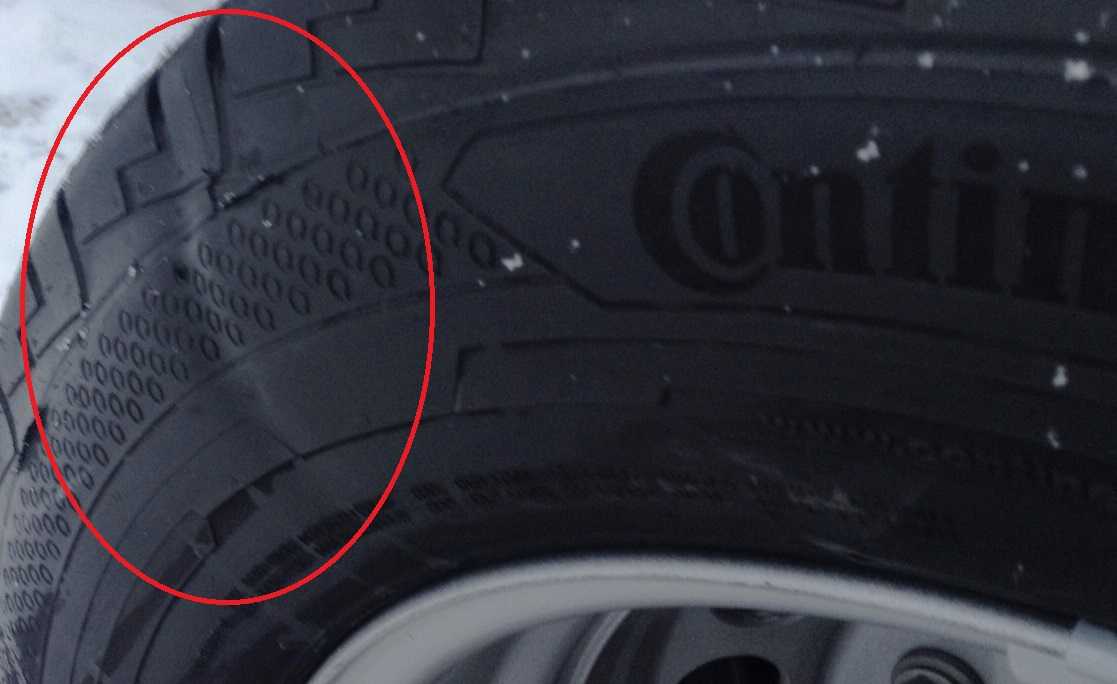 Some kits also contain rubber cement to help create a seal between the string plug and tire. The cost of a string plug repair kit ranges from $4.00 to $5.00. It is also possible to purchase additional string plugs at a cost of $2.00 to $3.00 for a package of three to five replacement plugs. A string plug repair facility cost half of other types of repairs, making it an attractive alternative for consumers looking to save money.
Some kits also contain rubber cement to help create a seal between the string plug and tire. The cost of a string plug repair kit ranges from $4.00 to $5.00. It is also possible to purchase additional string plugs at a cost of $2.00 to $3.00 for a package of three to five replacement plugs. A string plug repair facility cost half of other types of repairs, making it an attractive alternative for consumers looking to save money.
Tires that have been punctured and repaired with a string plug may hold air for months, years even for the remaining life of the tire. For this reason, many consumers consider a string plug repair a permanent solution. The tire manufacturing industry expressly disagrees. Various industry publications state that the greatest potential danger caused by a string plug repair is that this type of repair allows air and moisture to penetrate the body of the tire. The tire industry maintains that these elements seep in between the layers of the tire allowing the steel belts to degrade and causing the tire to deteriorate and corrode from within.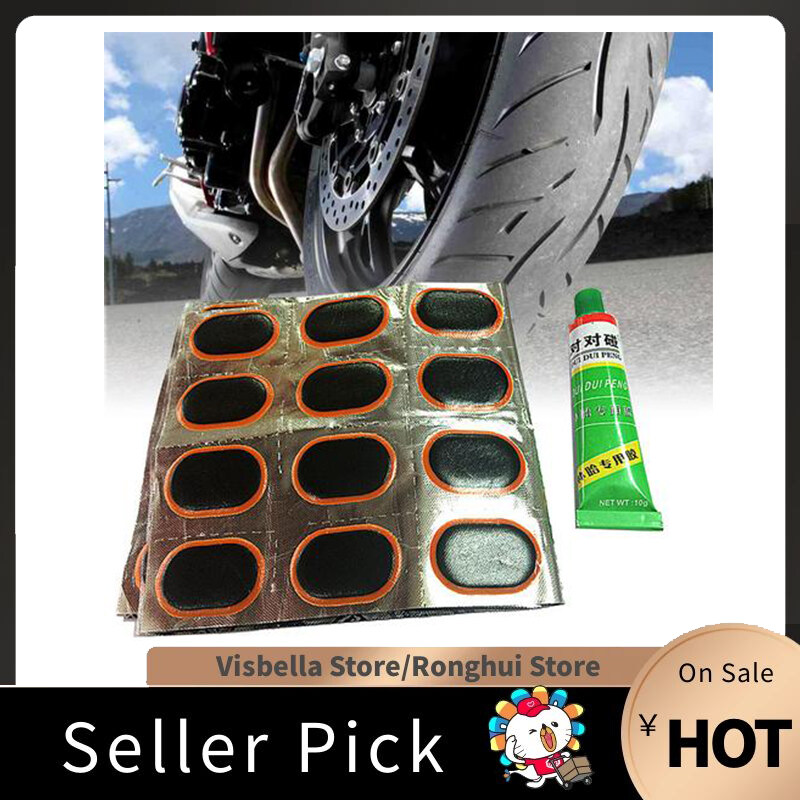 Over time, this corrosion weakens the steel belts and the bonds between the rubber-to-rubber layers and rubber-to-the-wire layers of the tire, greatly increasing the risk of a tread separation. An additional risk of performing a string plug repair is that a puncture, even if it is within the “repairable” area of the tire, may cause damage to the inside of the tires. Without inspecting the inside of the tire, it is impossible to determine whether any damage has occurred, requiring it to be scrapped.
Over time, this corrosion weakens the steel belts and the bonds between the rubber-to-rubber layers and rubber-to-the-wire layers of the tire, greatly increasing the risk of a tread separation. An additional risk of performing a string plug repair is that a puncture, even if it is within the “repairable” area of the tire, may cause damage to the inside of the tires. Without inspecting the inside of the tire, it is impossible to determine whether any damage has occurred, requiring it to be scrapped.
The second common tire repair method is a “patch-only” repair. In order t patch a tire, the technician must remove it from the rim to locate the puncture from the inside of the tire. After the puncture has been located, the area surrounding the puncture on the inside of the tire is prepared with scrapers, buffing tools and cleaning solutions in order to prepare the area to “bond” with the repair unit or patch. After preparation, vulcanizing cement is then applied to the patch and inner liner of the tire and the patch is applied over the puncture hole.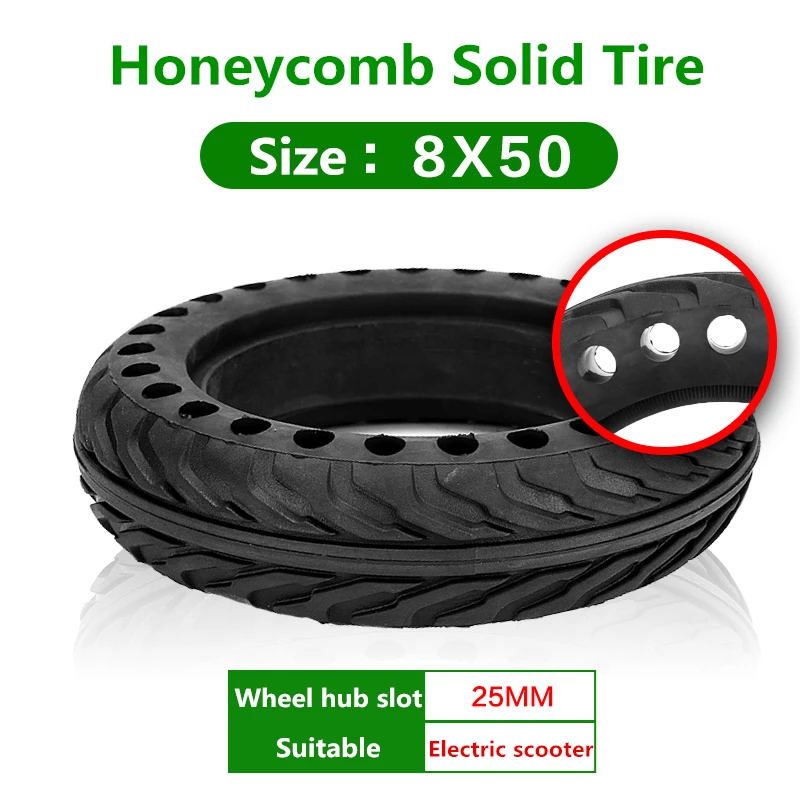 The patch and surrounding area is stitched or rolled, and may be covered with sealant before the tire is put back on the rim. The tire industry also considers this repair method to be improper because it may allow air and moisture to seep into the tire through the injury channel from the tread surface.
The patch and surrounding area is stitched or rolled, and may be covered with sealant before the tire is put back on the rim. The tire industry also considers this repair method to be improper because it may allow air and moisture to seep into the tire through the injury channel from the tread surface.
It is NHTSA’s position that a combination repair is the only way to properly repair a tire puncture. A combination repair consists of a repair patch with a rubber plug/stem attached to its center. There are some rare circumstances when a separate patch and plug can be used, but normally the industry guidelines recommend a combination repair unit that is only one piece. After a puncture is located, it is reamed out to create a clean hole for the plug. The area around the puncture on the inside of the tire is then prepared to bond with the patch. Vulcanizing cement is applied to that area and to the patch/plug combination. The plug is pulled from the outside of the tire through the reamed hole so that it completely fills the hole and created a tight seal with the rubber of the tire.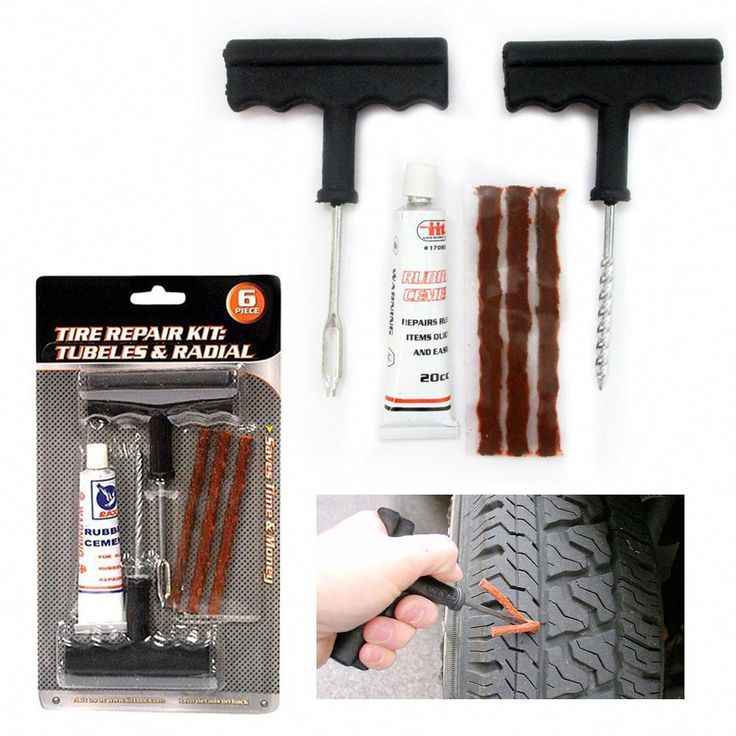 The patch bonds to the inside of the tire, preventing air from escaping with the plug seals the puncture hole preventing air form escaping while the plug seals the puncture hole preventing air and moisture from invading the tire. The rubber stem is trimmed to be even with the surrounding tread.
The patch bonds to the inside of the tire, preventing air from escaping with the plug seals the puncture hole preventing air form escaping while the plug seals the puncture hole preventing air and moisture from invading the tire. The rubber stem is trimmed to be even with the surrounding tread.
Tire Repair Litigation
The above tire repair methods have been in use for decades and litigation involving the failure of repaired tires is not new, nor is it particularly widespread. In fact, tire manufacturers will use “improper repair” as one of their primary defenses in litigation. Most recently, in October of 2011, a state court jury in Tampa, Florida awarded $13.64 million to Gwen and Roy Chattelle after they suffered a tire failure and crash at highway speed that rendered her a quadriplegic. The case went to trial against the service center and its employee, who inspected and improperly repaired a tire before the crash.
Three months prior to the crash, the Catelli’s right rear tire was low on air and was inspected and repaired by Tampa Auto Repair. There was no evidence introduced showing that the right rear tire had been moved, replaced or repaired again between the time of the repair and the time of the crash. At the time of the crash, the tire experienced a partial tread separation, suffered a catastrophic loss of air pressure and as a result, the vehicle went out of control rolled over several times. Inspection of the failed tire showed that it had two punctures. The first puncture had been repaired with an improper string plug and was already in the tire. Plaintiffs contended that the second puncture was an additional improper repair by the defendants that never properly bonded and, as a result, the repair unit became dislodged. Plaintiffs’ experts opined that the Defendants violated industry standards and their own internal policies requiring a tire with an existing improper repair to be removed from service rather than repaired. Destructive testing showed rust on the second puncture and evidence verifying the corrosion of the belts from exposure to air and moisture.
There was no evidence introduced showing that the right rear tire had been moved, replaced or repaired again between the time of the repair and the time of the crash. At the time of the crash, the tire experienced a partial tread separation, suffered a catastrophic loss of air pressure and as a result, the vehicle went out of control rolled over several times. Inspection of the failed tire showed that it had two punctures. The first puncture had been repaired with an improper string plug and was already in the tire. Plaintiffs contended that the second puncture was an additional improper repair by the defendants that never properly bonded and, as a result, the repair unit became dislodged. Plaintiffs’ experts opined that the Defendants violated industry standards and their own internal policies requiring a tire with an existing improper repair to be removed from service rather than repaired. Destructive testing showed rust on the second puncture and evidence verifying the corrosion of the belts from exposure to air and moisture.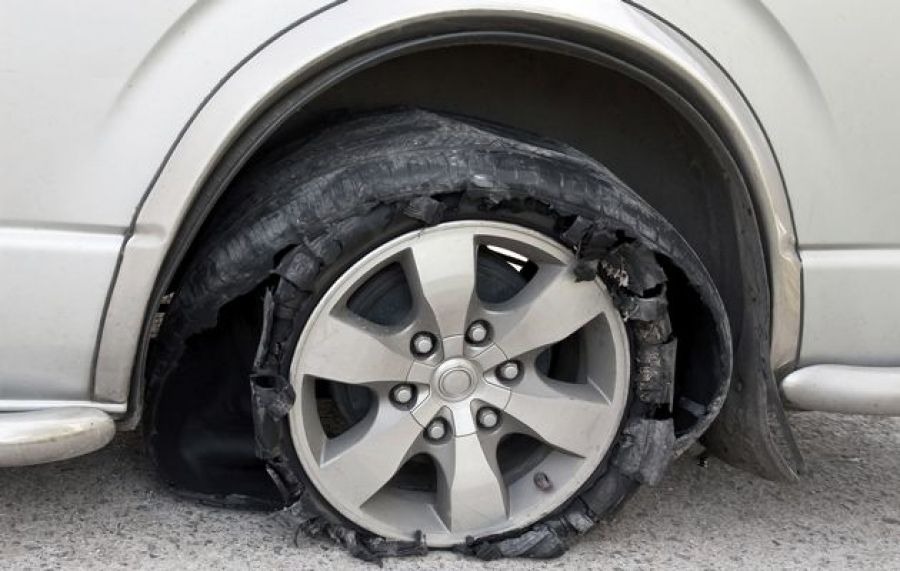 The jury returned a verdict for the plaintiffs, finding that the repair shop and its manager were liable for the Plaintiff’s damages. In march 2011, a jury in San Diego County, California awarded almost 14.5 million to the minor sons of Casey and Melanie barber who were killed in a 2006 Accident in which their van rolled over. At the time of the accident, the Barbers’ children were 3, 5 and 8 years old. The Barber case went to trial against a dealership that had repaired the tire using “patch-only” repair method described above. Additionally the puncture in the Barber’s tire was outside the reparable are recognized by the tire industry and evidence was presented at trial that the mechanic failed to prepare the area around the puncture to bond with the patch. Evidence was introduced that the tire mechanic who performed the repair had been on the job for less than a week and the shop had provided him with no how to properly repair a tire.
The jury returned a verdict for the plaintiffs, finding that the repair shop and its manager were liable for the Plaintiff’s damages. In march 2011, a jury in San Diego County, California awarded almost 14.5 million to the minor sons of Casey and Melanie barber who were killed in a 2006 Accident in which their van rolled over. At the time of the accident, the Barbers’ children were 3, 5 and 8 years old. The Barber case went to trial against a dealership that had repaired the tire using “patch-only” repair method described above. Additionally the puncture in the Barber’s tire was outside the reparable are recognized by the tire industry and evidence was presented at trial that the mechanic failed to prepare the area around the puncture to bond with the patch. Evidence was introduced that the tire mechanic who performed the repair had been on the job for less than a week and the shop had provided him with no how to properly repair a tire.
This highlights the fact that consumers are unacquainted with proper tire repair methods and assume they can rely on “professional” tire repair facilities to employ mechanics with the training necessary to complete repairs properly.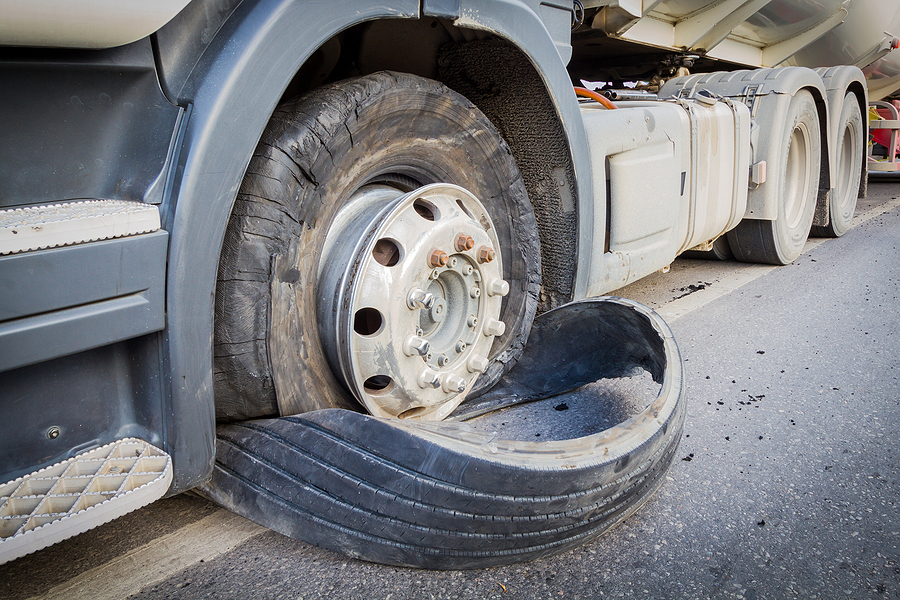 These recent cases emphasize the need for minimum training requirements for persons authorized to perform tire repairs. There is currently no Automotive Service Excellence certification for tire repair.
These recent cases emphasize the need for minimum training requirements for persons authorized to perform tire repairs. There is currently no Automotive Service Excellence certification for tire repair.
In 2006, a minor child in Florida was injured when the vehicle he was riding in experienced a tire blow out and crashed. The tire had been repaired at a service station with a string plug, but no patch. The Plaintiff sued the manufacturers of the string plugs, claiming that plug only repairs are unsafe and unreliable and can lead to tire failure. The trial court granted summary judgment to the plug manufactures, ruling the plugs were not defective in and of themselves because both sides’ experts testified that they could be used safely in combination with a patch. The court of appeals reversed holding that even if a string plug was not defective in all situations, such as when used in combination with a tire patch, the jury could have found that the string plugs failed to perform as safely as a reasonable consumer would expect under Florida’s “consumer expectation” standard in product defect cases.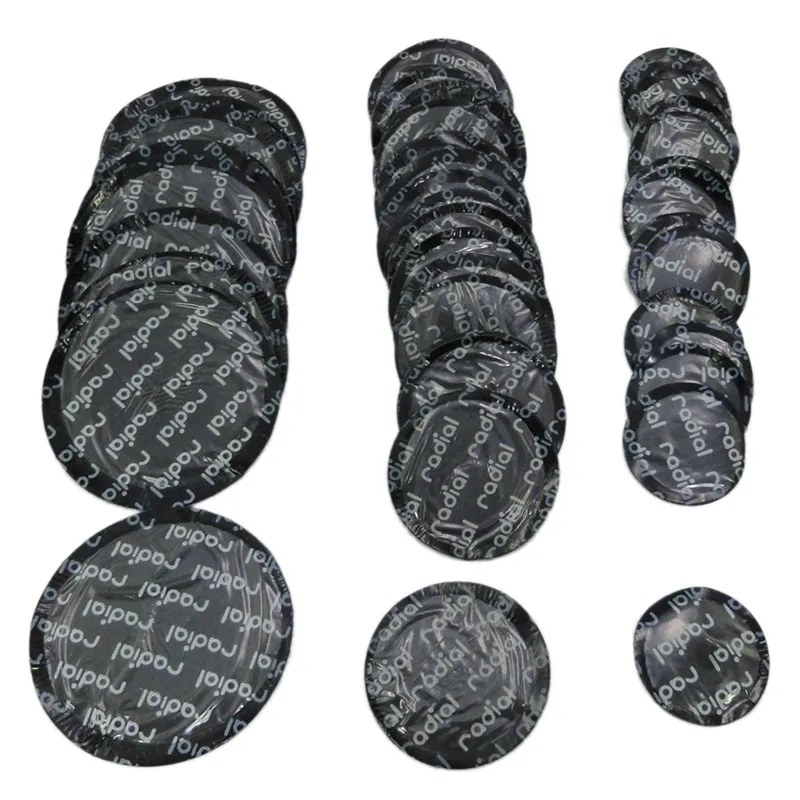
In 1996, in Peterson V. Ress Enterprises, a Chicago jury awarded $12.65 million to the Plaintiff. Peterson was a college student who was rendered quadriplegic in an accident resulting from a tire failure. The Plaintiff contended that the accident tire was improperly repaired by the defendants using a plug-only repair five months before the crash. On appeal, the appellate court affirmed the judgment in favor of the Plaintiff. The appellate court’s summation of the expert testimony in instructive about how string plug repairs can lead to tire failure:
Plaintiff’s expert testified that the tire failed upon road hazard impact because it was improperly repaired for a puncture with a string plug, causing air to seep into the tire’s casing. Goodyear’s expert testified that he failed tire was weakened prior to the accident by air seepage and migration resulting from Ress’ string repair.
Goodyear’s other tire expert testified that tire failures result from string plug repairs and that a string plug without a patch does not effectively seal a tire’s inner liner and air can seep into a tire’s carcass.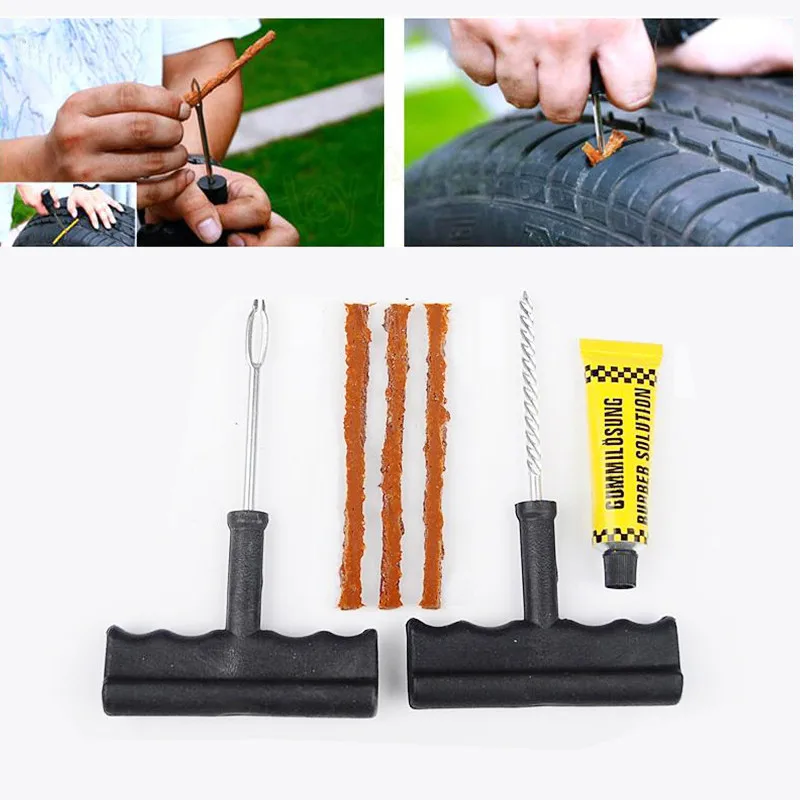 Goodyear’s expert further testified that tread separation affects belt strength and renders a tire less capable of traversing road hazards.
Goodyear’s expert further testified that tread separation affects belt strength and renders a tire less capable of traversing road hazards.
Despite widespread knowledge among such industry experts that string plug repairs are unsafe; this knowledge does not appear to be shared by the public. One challenge for plaintiffs in prosecuting a tire repair case is that many jurors have preconceived opinion that patch-only and plug-only repairs are safe and effective. Due to the lack of knowledge, many consumers believe these repairs are proper. These misconceptions are buttressed by the fact that improper can last years without failure. As a result, any juror seated in a tire repair case will likely have either personal experience with plug-only or patch-only repairs that perform without incident. Potential jurors will also hear a long string of anecdotes from other potential jurors who used these improper repairs without incident.
A second challenge, which was highlighted by the Peterson case, is that most failed tires have been in service for some period of time and show signs of some form of abuse or misuse, such as road hazards, under-inflation or overloading.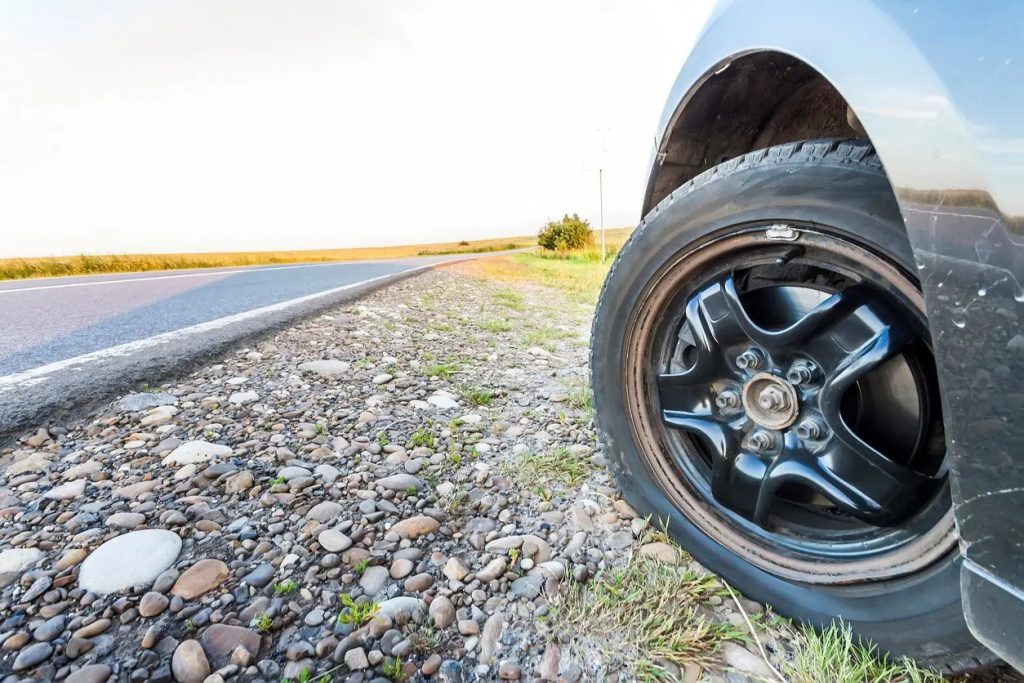 These conditions, which may or may not have contributed to the tire’s failure, create challenges in proving causation. They certainly result in ready-made defense for defendant tire manufactures. Oftentimes, multiple causes will come together, such as in Peterson, where the collective trial experts opined that the immediate precipitation event was an impact with an unknown road hazard. However, the collective Peterson experts reasoned that the tire was unable to withstand a road-hazard impact because it was already weakened by internal deterioration from the string plug.
These conditions, which may or may not have contributed to the tire’s failure, create challenges in proving causation. They certainly result in ready-made defense for defendant tire manufactures. Oftentimes, multiple causes will come together, such as in Peterson, where the collective trial experts opined that the immediate precipitation event was an impact with an unknown road hazard. However, the collective Peterson experts reasoned that the tire was unable to withstand a road-hazard impact because it was already weakened by internal deterioration from the string plug.
Why the use of Improper Repairs Persists Despite Clear Warnings
Despite the difference of a few dollars in cost between an unsafe, improper repair and a safe combination repair, widespread use of these improper repairs persists. Several factors contribute to this continued popularity of improper repair techniques. First, because plug-only repairs are performed from the outside of the tire and do not require demounting the tire from the rim, a plug-only repair can performed by almost anyone, anytime and with nothing more than an inexpensive repair kit.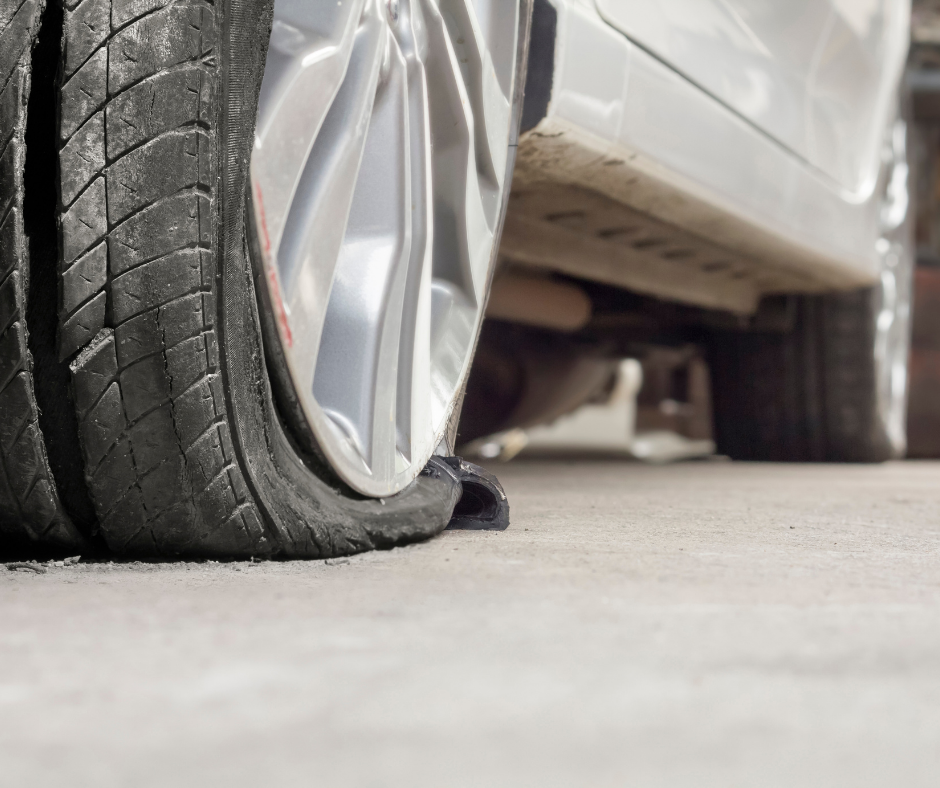 It is a relatively simple process that does not require the multiple steps necessary for a proper repair, like demounting, sanding or buffing, nor are adhesives required, making these repairs faster and less expensive. For most people it means the difference between being able to “do it yourself” at your own convenience, and having to leave your vehicle at a repair shop to be fixed on someone else’s schedule.
It is a relatively simple process that does not require the multiple steps necessary for a proper repair, like demounting, sanding or buffing, nor are adhesives required, making these repairs faster and less expensive. For most people it means the difference between being able to “do it yourself” at your own convenience, and having to leave your vehicle at a repair shop to be fixed on someone else’s schedule.
Secondly, problems caused by plug-only repairs may not happen immediately and, therefore, even if the tire does eventually fail, people may not associate that failure with the repair that occurred months or years earlier.
Additionally, many tire mechanics are never trained with proper techniques and many have used string plugs for years, resulting in a comfort level with the product. Many tire repair shop policies actually encourage the use of this method. Past testimony indicates that some shops are unaware or unconcerned with the safety issues caused by plug-only repairs. Other shops yield to the wishes of consumers who may insist the mechanic perform a plug-only repair that may save money. Still other cases show that some repair facilities actually train their mechanics to use plug-only repairs and supply the shop with the tools to do so. However, even shops those “officially discourage or prohibit the use of string plugs often employ a pricing and wage structure that creates a strong incentive for its workers to use them anyway.
Other shops yield to the wishes of consumers who may insist the mechanic perform a plug-only repair that may save money. Still other cases show that some repair facilities actually train their mechanics to use plug-only repairs and supply the shop with the tools to do so. However, even shops those “officially discourage or prohibit the use of string plugs often employ a pricing and wage structure that creates a strong incentive for its workers to use them anyway.
After reporting the out come of Barber case discussed above, one automotive repair websites received scores of comments critical of the litigious Americans” who had field lawsuits related to plug-only repairs. One commentator, apparently a mechanic at a facility that repairs tires said “We were told to patch, but I buy my own plugs … a patch pays 0.3 a plug pays 0.3” In other words, most repair facilities compensate mechanics by the type of job, assigning a specific amount of time to complete it. If a tire, it will usually take longer that the time allotted to perform a combination repair. These results in a incentive for the mechanic to use the quicker, less effective repair method to save time, make more money and move on to the next job.
These results in a incentive for the mechanic to use the quicker, less effective repair method to save time, make more money and move on to the next job.
Finally, consumers are unacquainted with the long term dangers of driving on tires with improper repairs. There are strong public sentiment that our government is overly active in recalling and banning unsafe products, so it is reasonable for consumers to assume that if string plug repair kits are being offered for sale legally at reputable retailers and tire repair shops, they must be safe. A cursory review of multiple automotive websites reveals the widely revels the widely held belief that if a string plug holds air, it is safe to use. Some consumers buy “emergency tire repairs kits” just to get them through a roadside emergency, but then forget to replace the tire. Consumers may also assume that if the tire is holding air, the string plug is “working” without realize that it is causing the tire to slowly deteriorate from the inside.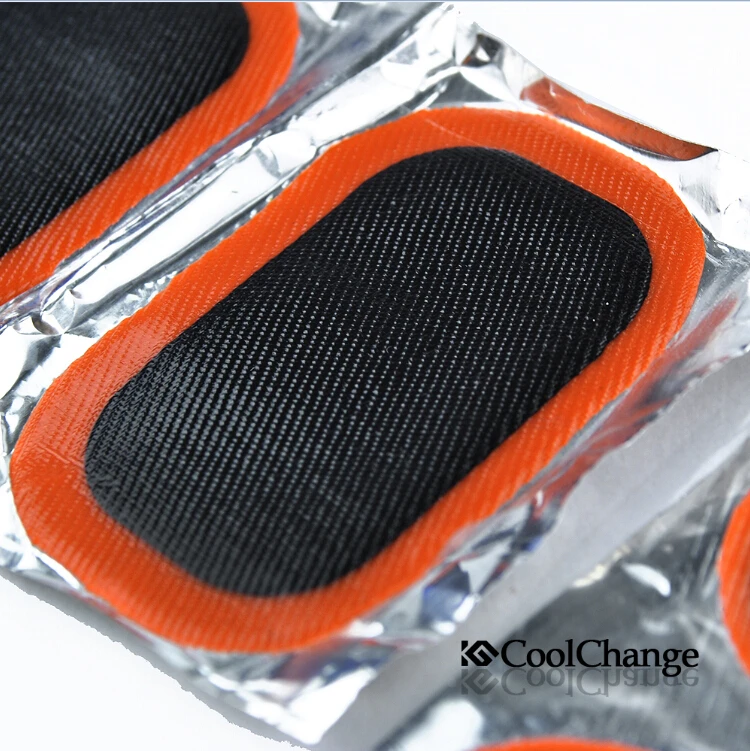
“This post contains affiliate links, and I will be compensated if you make a purchase after clicking on my links.”
Road hazards come in many shapes and sizes. Sometimes, no matter how careful you are, there will always be small and sharp debris that will slip through and cause damage, especially to your tires. And that’s where a tire patch comes into the picture.
AppleZoomZoom / Shutterstock.comLet’s face it, a puncture is inevitable in a tire’s lifespan and repair will be required. And car owners know that getting punctures is part of the experience of owning a car.
However, not all car owners know how to properly deal with them. But don’t fret! This article will serve as your all-encompassing guide on proper tire inspection and patching.
Contents
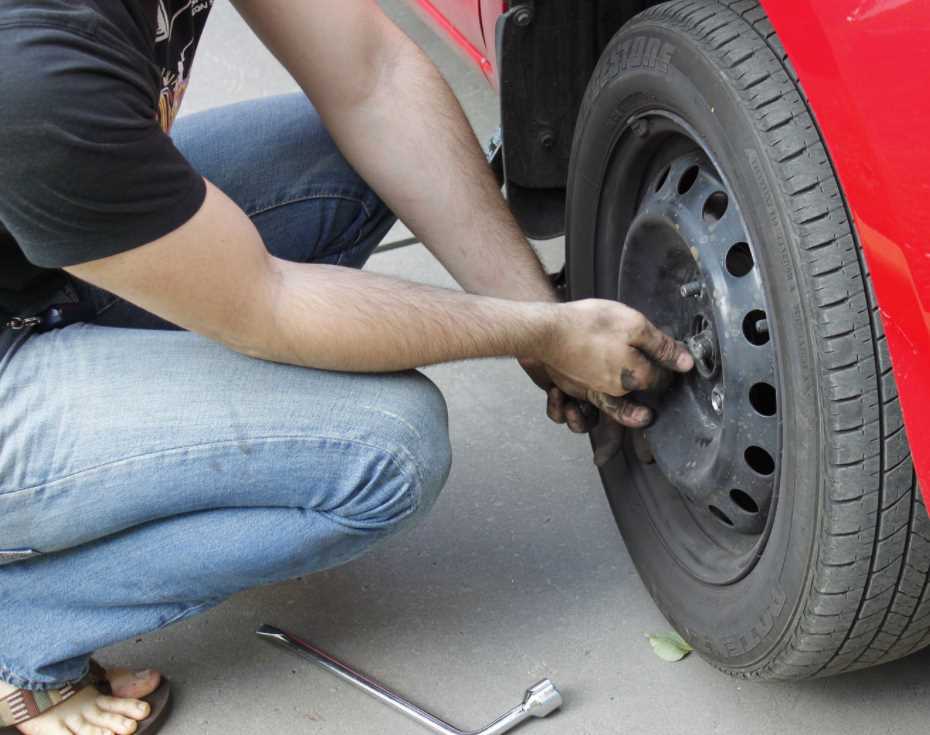 Patch
PatchA punctured tire is a common type of car issue that usually involves a foreign object, usually sharp, piercing through the rubber and letting air escape, eventually causing a flat.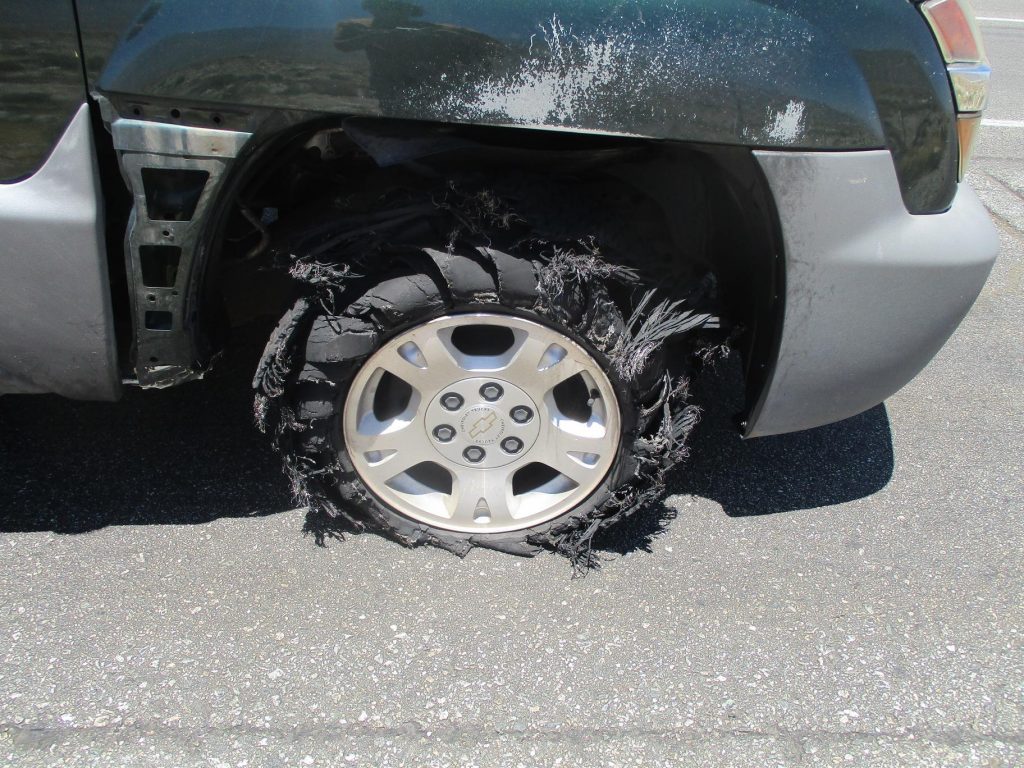
This can be a mild or a severe problem, depending on the punctured area. And if not properly attended to, could damage the whole tire, resulting in replacement and a lot of dangers while driving.
When your tires get punctured, You may not notice it instantly at first. So here are a few certain ways to find out if your tires have been punctured or not:
This actually depends on the punctured area. If the object pierces through the center of the tread area, then it can be patched. But a puncture greater than ¼ of an inch or 6mm will require a tire replacement.
But a puncture greater than ¼ of an inch or 6mm will require a tire replacement.
In many cases, bent nails are in the perfect position to pierce through anything that comes in close contact with them. And car tires are one of their top victims.
However, there are also a few small and sharp objects you should look out for. These include:
A good driver should always be prepared for any road hazard like a puncture. And being able to identify one is always crucial before patching your tire.
Proper tire repair helps prolong the lifespan of car tires. This then leads to a number of advantages on your end as a car owner.
Here’s a few of them:
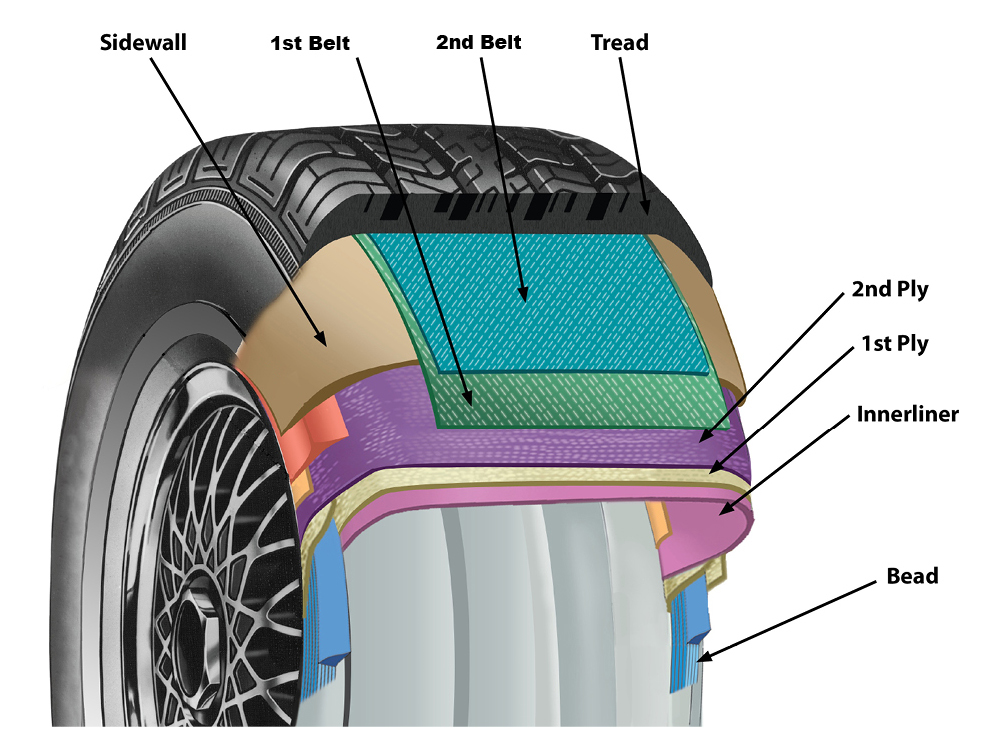
Improper repairs can lead to conditions that can put people’s safety in danger while on the road. Additionally, it can lead to constant loss of air pressure which then leads to premature tire replacement.
There are a few different methods to patch a punctured tire. Here are the most common types:
A tire patch is a repair method that works well for leaks and small punctures. But only if the damage is in the center of the tread area.
It is highly recommended that a professional performs this repair.
When patching, proper inspection to locate the puncture is a must. The tire should be removed carefully from the wheel and then the rim.
The technician will then buff the surface of the puncture so the patch can attach itself to it. The patch will then be glued over the puncture, smoothen out and finished off with a patch sealer.
A proper tire patch takes about 20 to 30 minutes. This is because the tire has to be taken off the car and inspected properly.
Without taking the tire off the car, there is no way for the technician to properly inspect the inside of the tire. Remember, tire patches are only applied if the puncture is in the tread area only.
A patched tire, if repaired by a professional, can last 7 to 10 years. This is why it is recommended to get your tire patched by a technician, since they have the knowledge, skills and tools to complete the job.
A tire plug is a quick yet temporary repair method where a sticky piece of string, coated with unvulcanized rubber, gets pushed into the punctured area of your tire so air cannot escape.
Unlike a tire patch, you can do a tire plug on your own. And since it’s a quick repair method that’ll help get you off the road, having your own tire repair kit will come in handy. Here are a few options you can easily buy online:
| Preview | Product | Price | |
|---|---|---|---|
| Boulder Tools - Heavy Duty Tire Repair Kit for Car, Truck, RV, SUV, ATV, Motorcycle, Tractor,... | $37.99 | Buy on Amazon |
| Preview | Product | Price | |
|---|---|---|---|
TECCPO Tire Repair Kit, 100Pcs Heavy Duty Tire Plug Kit for Car, Truck, RV, ATV, Tractor, Trailer,.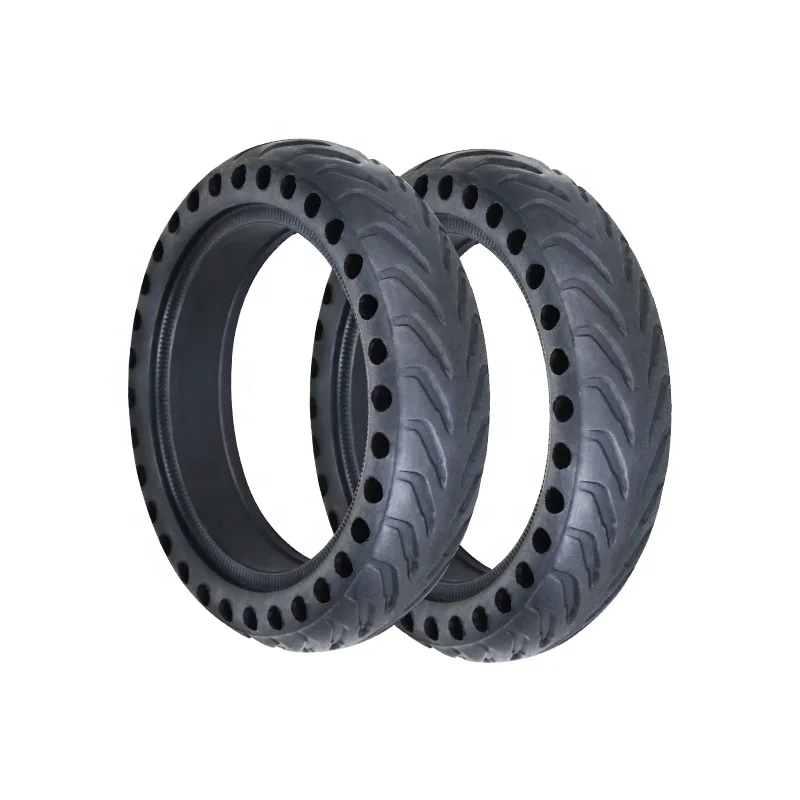 .. .. | Buy on Amazon |
| Preview | Product | Price | |
|---|---|---|---|
| Tooluxe 50002L -35 Piece Tire Repair Universal Heavy Duty Tire Repair Kit with Plugs, Fix A Flat... | $18.99 | Buy on Amazon |
First, you need to remove the object that punctured your tire using the kit. Second, you need to widen the hole slightly with the large puncture tool and place the string on the needle-like tool. Finally, you will press the plug through the hole and pull the tool so the plug gets left behind to seal the hole.
A tire plug takes only just a few minutes, not even more than 15 minutes. This is because it doesn’t require tire dismounting, unlike a tire patch.
This method can only last up to 25,000 miles. It is not as reliable as a tire patch. But it is a good alternative if you need to drive off to find better repair.
A tire patch-plug is a type of repair combining both the patch and plug methods. This involves using a small, round rubber patch with a plug in its center.
This is the best among all three options as it creates a better, safer and long-lasting solution for punctures. This is why most professionals prefer this repair method.
The tire patch-plug requires drilling through the puncture to widen it so that the small round patch’s plug can fit through.
The technician will then buff the puncture from the inside of the tire and glue the patch in place. After that, the technician will pull the plug from the outside of the tire. Finally, once the plug is pulled all the way through, the technician will then cut the plug’s length to match the tire’s tread.
After that, the technician will pull the plug from the outside of the tire. Finally, once the plug is pulled all the way through, the technician will then cut the plug’s length to match the tire’s tread.
A tire patch-plug is a time-consuming process. It will take around 30 minutes or more to finish the whole process. It’s because it’s a combination of both the patch and plug’s repair processes.
When done correctly by a technician, a patch-plug can last the whole lifetime of the tire with no issues. This is also the reason why technicians prefer this method over other repair methods.
Now that you are familiar with the most common repairs for punctures, it’s important to know next which one of these methods is best suited for your tires.
See below for the most important questions to ask when evaluating whether your tire needs a patch, plug or a replacement.
If a puncture is in the center of the tread area and is no greater than ¼ of an inch (6mm), then you are in luck! Your tires can still either be patched or plugged.
(gcpics / Shutterstock.com)If the cut or puncture is greater than ¼ of an inch, and is located or extends through to the shoulder or sidewall area, then you will need tire replacement. Repairing anything of that size will reduce the tire’s durability.
If a puncture is less than ½ inch from the steel belts on the shoulder or sidewall, then it is no longer repairable.
(Pixelbender36 / Shutterstock.com)The sidewall of your tire is under a different form of pressure and flexes often while you drive. If you patch or plug a puncture that is too close to the sidewall, it will cause an unexpected and dangerous blowout. This is why you need to have your tire replaced.
If you don’t want to break the bank buying new tires, blemished tires are a good alternative.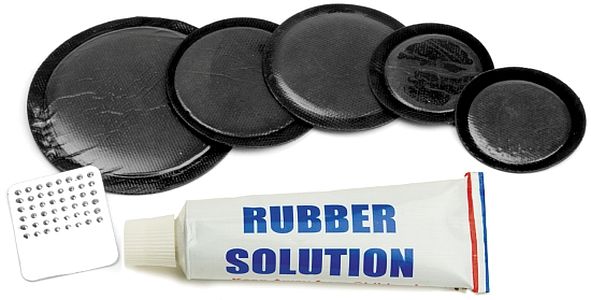
Under certain circumstances, patching a run flat tire is possible. A lot of factors need to be considered, like the nature of the puncture and how big the damage was.
If the puncture is small, then patching will do. However, if for example, the reinforced sidewall sustained a lot of damage, then a tire replacement is the way to go.
(Smile Fight / Shutterstock.com)Keep in mind that careful inspection of the tire will determine whether the tire needs a patch or a replacement.
Ultimately, when the situation arises, it’s best to use your judgment based on your tire manufacturer’s recommendation or repair policy. And if unsure, ask for assistance by contacting your tire manufacturer’s customer service.
No. Even though a tire patch can last 7 to 10 years (if done properly), doing it twice is not recommended by professionals. The same goes for repairing overlapping punctures.
The reason behind this is that doing so can affect the tire’s speed rating and worse, cause blowouts.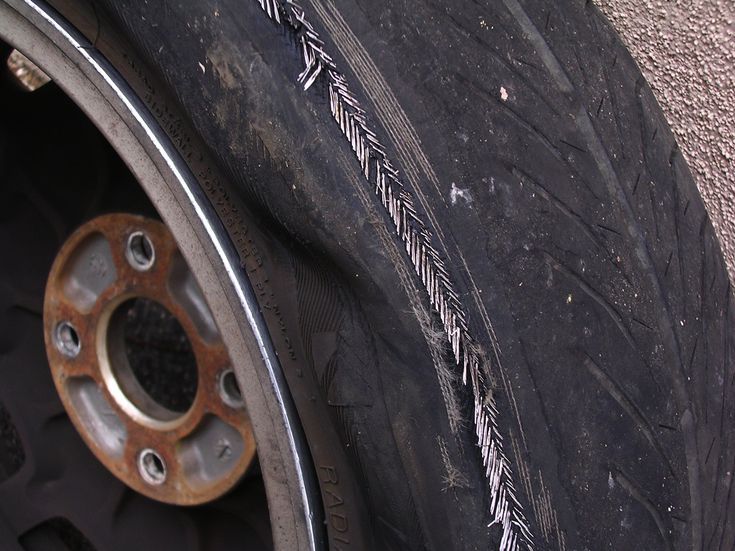
The price range to patch a tire depends on where you’re getting it from. Generally, it will cost you anywhere between $10 to $20 for the patch and rebalance. The earlier you catch the puncture, the less you’ll have to spend.
If you’re lucky enough, you may even encounter tire repair shops that offer this service for free! Or if you got the patch from your tire manufacturer, then there’s a big chance that the repair will be a free service.
However, there are shops that can charge as much as $40, especially if it’s a patch-plug repair. But remember, the patch-plug repair is the safest way to repair a puncture and is quite time-consuming.
With a proper tire patch, you can save your tire and avoid road hazards without breaking the bank. That sounds a lot better than buying new tires, doesn’t?
If you want to get the puncture fixed as soon as possible, then visiting the nearest tire repair shop is ideal.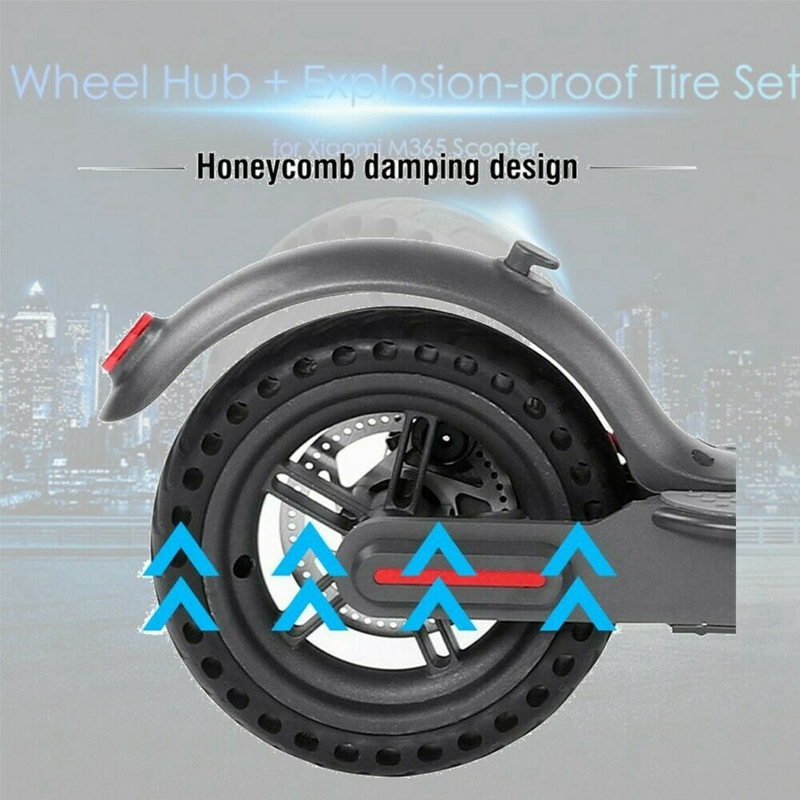
However, if you want to know if a tire manufacturer or dealer is offering tire patching services, then continue reading below!
No, they don’t. However, they can supply you with the tools you need to temporarily repair your tire – a repair kit, rubber cement and tire patches.
Yes. Walmart patches tires at any of their locations with an Auto Care Center. However, if you don’t schedule an appointment with them in advance, they won’t be able to attend to your car troubles right away.
Walmart Auto Care Center can do the job for $15 per tire. Luckily, if you bought your tires from them, they can potentially patch your tire for free since they provide after-sale services.
Yes, the National Tire & Battery (NTB) Auto Center patches tires. According to their website, their tire patching services include tire inspection, industry-approved repairs, tire remounting and balancing.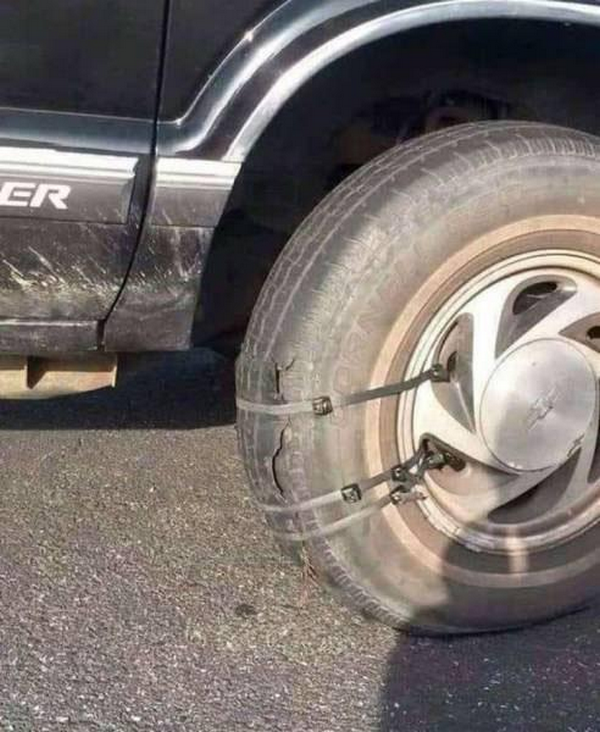
A tire patch at NTB will cost you $19.99 for each tire. Their website actually has a store selector where you can choose the nearest NTB Auto Center to you. From there, you can get an accurate pricing calculation based on your location.
Yes, but only if you are an active member. Other than a tire patch, you also get to enjoy their emergency roadside assistance that includes towing, jump start, fuel delivery service, etc.
A patch is free of charge if you’re an active member at Sam’s Club. The best part about this is that it’s a lifetime of tire repairs!
However, if you want to enjoy their other services like their emergency roadside assistance, you should get their Premium Tire Installation Package for $20.
Yes, Costco patches tires. If you got your tires installed at any of their Tire Centers, you are entitled to a lifetime of free tire repairs!
A patch is free of charge if you got your tires installed at Costco. However, if your tires are not installed at Costco, they can still patch them for $10.99 each.
However, if your tires are not installed at Costco, they can still patch them for $10.99 each.
Unfortunately, no. The American Automobile Association (AAA or Triple A) does not patch or plug tires.
However, they offer roadside assistance services to get you off the side of the road. They can install a spare tire (if you already have one), re-inflate your tire and tow your car to their nearest authorized service center or to any location you choose to get your tire repaired.
It is worth noting that the extent of their assistance all depends on your membership level.
Yes, Grease Monkey patches tires. According to their website, they can patch tires in approximately 15 minutes and the whole process is done according to industry standards.
The cost of a tire patch isn’t explicitly stated on their website, but you can schedule a repair in advance and request a quote for their services.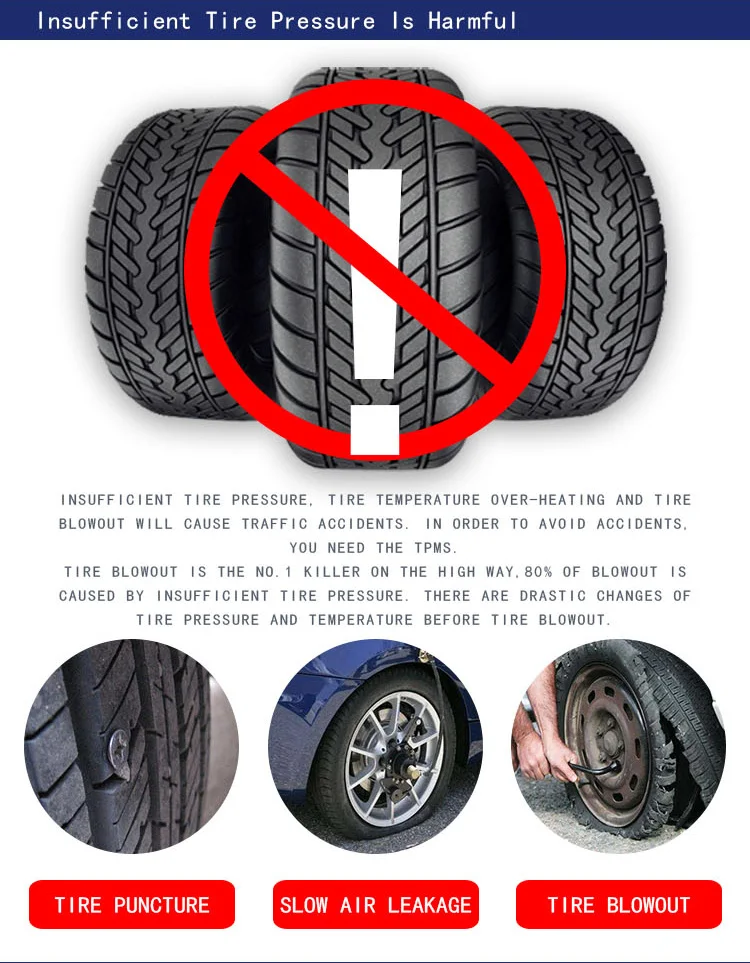
Unfortunately, Valvoline does not patch tires. However, other than oil change services, they offer other car maintenance services like tire rotation and battery replacement.
Pepboys does patch tires. Not only that, but they also offer a complete inspection of the tire before repairing it, tire balancing and even a courtesy vehicle inspection.
A tire patch at Pepboys will cost you $19.99 for each tire. If you prefer to book in advance, you can schedule your repair on their website.
Absolutely! Firestone patches tires. They have over 1,700 auto care stores across the US that offer tire patching and other services like mounting and balancing.
The exact cost of a tire patch at Firestone is not stated on their website. However, you can schedule your appointment with them online and find out.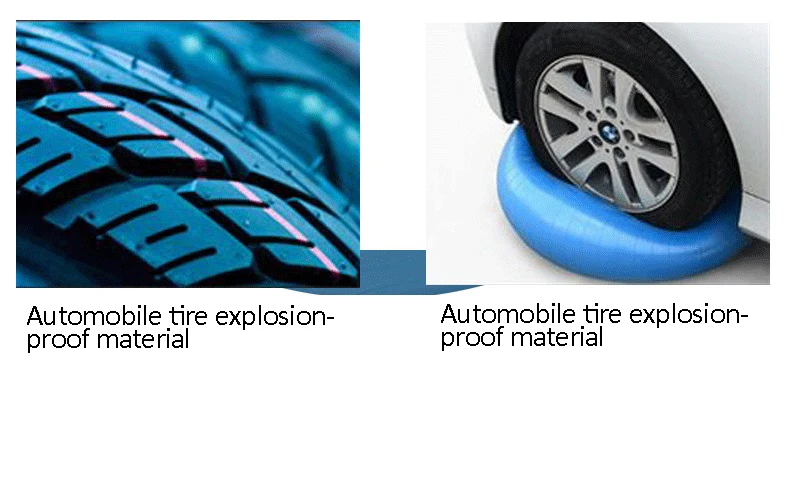 This’ll depend on your car’s year, make and model.
This’ll depend on your car’s year, make and model.
Yes. Jiffy Lube patches tires. As a matter of fact, the repair method they use is the safest, patch-plug. And the whole repair process at Jiffy Lube is all according to industry standards.
A tire patch at Jiffy Lube can cost you between $10 to $20. Since they use the patch-plug method, the whole process takes time and includes tire balancing.
Yes, Mavis Discount Tire does patch tires. The repair process at Mavis includes tire rebalancing for most cars with rims under 18 inches.
A typical tire patch starts from $23 at Mavis. However, they offer a $10 off coupon on their tire repair services for the rest of 2022, which is available on their website.
Yes. America’s Tire offers tire patching services. They follow strict industry guidelines that help keep you safe on the road.
They follow strict industry guidelines that help keep you safe on the road.
If you purchased your tires at America’s Tire, then any tire service from tire rotation to puncture repairs are free.
If a patch has been done properly according to industry standards by a professional, then absolutely!
To reiterate a few points mentioned above, proper tire repair is essential. It keeps you and everyone in the car safe on the road.
A well-patched tire poses no danger. If you had a professional do the job for you, then you can be back on the road in no time.
With this in mind, you’ll be able to drive the patched tire long distances the same way before it got punctured.
(Peter Fazekas / Pexels.com)A car with properly patched tires should be safe up to about 80 to 90 mph.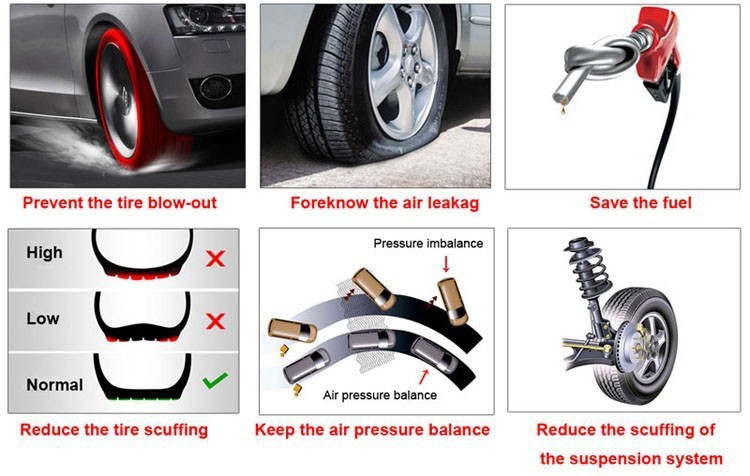 Anything beyond that depends on the quality of your tire and the patch itself.
Anything beyond that depends on the quality of your tire and the patch itself.
However, it is safer to drive a patched tire according to the recommended speed limit.
Tires are one of the most essential components of a vehicle. We rely on them to bring us to all our destinations safely. So keeping them in good shape and taking care of them is a must.
Being prepared to handle a puncture while you’re on the road not only keeps you safe but also keeps your tires’ life long – delivering thousands of miles and ensuring a safe trip and a stable performance.
Vladimir Gavrilov
Estimated reading time: 3 minutes
7651
Category: Service Auto
In the spring, you often have to resort to the services of tire fitting services.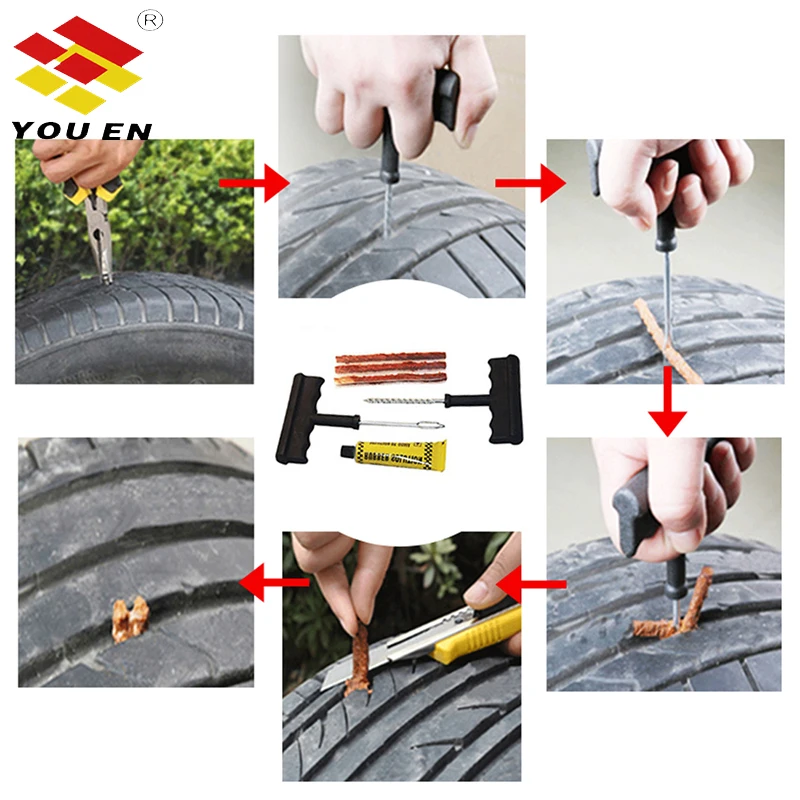 The wheel suddenly descends, and one swap with the compressor is enough for literally a couple of hours. This is enough to get to the workshop. Employees usually inspect the tire and offer repair options of varying cost and complexity, ranging from a simple flagellum to a complex patch on the inside of the tire. Which way do you prefer?
The wheel suddenly descends, and one swap with the compressor is enough for literally a couple of hours. This is enough to get to the workshop. Employees usually inspect the tire and offer repair options of varying cost and complexity, ranging from a simple flagellum to a complex patch on the inside of the tire. Which way do you prefer?
Repair with a small tape impregnated with sealant is the easiest and cheapest of all the methods listed. Even a motorist on the side of the road can execute it. To repair with a flagellum, it is not necessary to remove the wheel from the hub.
Flange repair kits are available from all parts stores. They include an awl, a file, flagella and sealant. The repair technology is simple. First, a puncture site is searched for in the rubber, a nail or self-tapping screw is removed with pliers, and the resulting hole is cleaned with a file.
Usually the tool is screwed into the hole like a self-tapping screw and then pulled out along with the bits of rubber embedded in it. The hole is smooth and round.
The hole is smooth and round.
Next, you can put the flagellum. They are sold in packages and in a protective film that prevents the applied sealant from drying out. The length of each flagellum is about 200 mm.
Take an awl with an eye for installing the harness and push it into the hole in the tire to the middle. The ends of the bundle remain outside. We pull out the awl and cut off these ends. The flagellum completely closes the hole and can easily withstand pressure up to 3 atm.
True, such repairs are short-lived. Over time, the flagellum is squeezed out of the hole, and the wheel begins to bleed air. Therefore, if possible, it is better to visit a tire shop and install a more reliable element.
This tool is used for quality and reliable tire repairs. True, the installation of the fungus is possible only in the workshop after removing the tire from the disk.
The repair tool is an adhesive patch with a foot to fill the puncture site.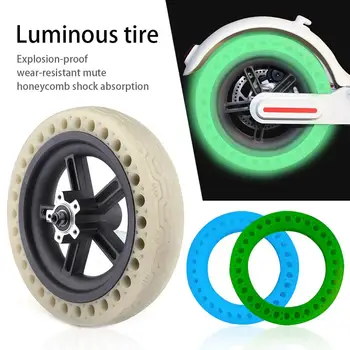 After cleaning the damage with a file, the fungus is inserted into the hole from the inside and pressed tightly with a press for a better fit. The leg and cap, lubricated with glue, are well fixed on the rubber and cover the puncture site. Such a patch can work for many years without losing pressure in the wheel. But this repair is five times more expensive than installing a flagellum. They resort to it if the hole turned out to be large.
After cleaning the damage with a file, the fungus is inserted into the hole from the inside and pressed tightly with a press for a better fit. The leg and cap, lubricated with glue, are well fixed on the rubber and cover the puncture site. Such a patch can work for many years without losing pressure in the wheel. But this repair is five times more expensive than installing a flagellum. They resort to it if the hole turned out to be large.
This type of repair has been used for many decades. Twenty years ago, it was almost the only way to repair major damage. However, now patches are extremely rare.
Their disadvantage is that, due to the large fixation area, it is rarely possible to adhere the material evenly. Cavities appear through which air escapes.
However, a patch may be necessary for severe cord cuts with torn rubber damage that the fungus can no longer cope with. It is difficult to clean them, which is why the leg of the fungus cannot fit snugly into the puncture site.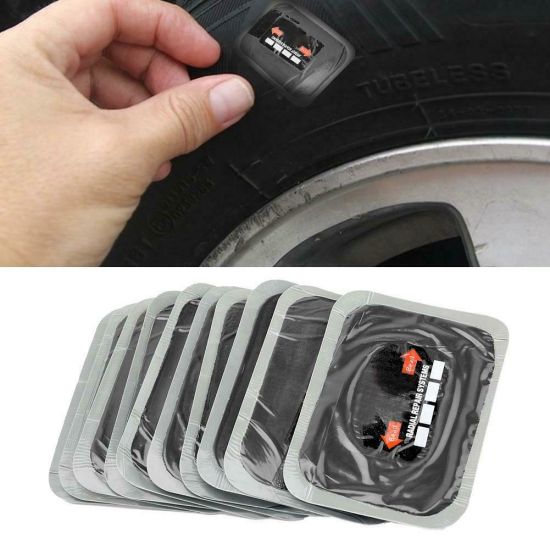 Therefore, the entire problem area is sealed with a layer of rubber.
Therefore, the entire problem area is sealed with a layer of rubber.
Patches are not as reliable as fungus, but they do help to repair half-centimeter cuts. Sometimes patches are even glued to hernias from the inside in order to keep the tire working for some more time for a trip to the wheel shop.
Long driving with patches is not recommended.
tire repaircar maintenancetips for motorists
Next article
Media news2
Author: Kirill Savchenko
“Chief, you've got ten minutes of work to do, the hole is nothing! Well, come up with something . .. ”Every tire fitter has probably heard such words. Alas, not all tire damage can be repaired...
.. ”Every tire fitter has probably heard such words. Alas, not all tire damage can be repaired...
But the situation can be reversed. A wheel pierced by protruding reinforcement may be repairable, while a small cut will write off the tire for scrap. Experienced tire fitters believe that it all depends on the point of damage and the object that caused it.
Most often, drivers encounter punctures in the tread area of a tire. It is not always possible to detect it immediately. If in the days of tires and chambers the wheel lost pressure at the slightest puncture, then tubeless tires are much more reliable in this regard. A nail or self-tapping screw usually closes the puncture site, preventing air from escaping quickly.
With such a "plug" you can sometimes drive for months. The tire can lose pressure minimally without arousing suspicion. At the same time, an attempt to pull out a noticed nail on the way is likely to turn into a problem. In this case, the only recommendation is to pull out a foreign object only in a tire shop and repair the wheel.
In most cases, tread punctures are repaired either with special harnesses (some for temporary use, some for permanent use) or patches on the inside of the tire. Even damage caused by massive pins can be repaired. The main thing is that a piece of the tire along with the cord is not torn out.
In the latter case, the hole is filled with raw rubber, vulcanized, and a special cord patch is placed on the inside. But this will only be a temporary measure. In addition, such repairs are not cheap, and purchasing a new tire can be both more profitable and safer.
In addition to the plaster, cord "fungi" are also used. Lubricated with glue, the “fungus” is inserted into the puncture from the inside of the tire, then the excess part of the “leg” is cut off from the outside.
On the other hand, a cord patch can seriously help with side cuts. And car owners meet with them quite often. But here there are several nuances. In a roadside tire shop, the cut will most likely not heal. You need to contact a company with specialized equipment, primarily vulcanization.
You need to contact a company with specialized equipment, primarily vulcanization.
And one vulcanizer is indispensable here. Cord patches should be with a certain number of layers, designed for strictly defined damage sites and of a suitable size. And again we are talking about the nuances.
If the cut is in the shoulder area of the tire, then it is most often impossible to repair it qualitatively. The tire fitter who offered such a service is at great risk, even if he claims that he will weave a piece of new cord with his hands and vulcanize it. There are no miracles in this situation, but in any case, the last word belongs to an experienced specialist.
Side cuts on low profile tires with a tread height of less than 50% of the width are poorly treated. That is why, in the case of using a car on roads with a possibility of tire damage, it is better to put those that are higher. They are much easier and cheaper to repair.
By the way, what appears to be a cut at first glance may not be one.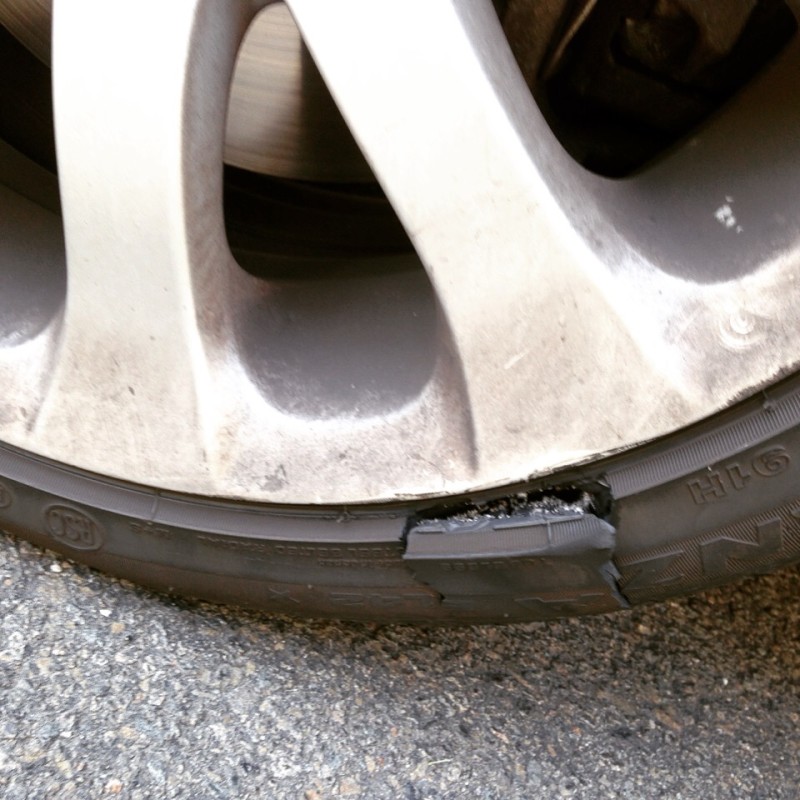 If the sidewall of the wheel catches on something sharp, and a tear forms on the tire without damaging the cord, then this is called a pinch. It does not carry momentary danger and does not require any complex repairs.
If the sidewall of the wheel catches on something sharp, and a tear forms on the tire without damaging the cord, then this is called a pinch. It does not carry momentary danger and does not require any complex repairs.
However, if a piece of rubber remains, then it is glued with ordinary superglue. If not, you will need raw rubber and a vulcanizer. It is impossible to leave the cord bare: under the influence of moisture, it can collapse, which will lead to the complete loss of the tire.
One of the most common and fatal tire defects is swelling or simply "herniation". Despite the absence of open damage to the rubber, such a wheel will be scrapped ahead of schedule. The fact is that when the sidewall is hit, the threads of the tire carcass break. Even if the swelling is very small, sooner or later the bump grows in size, and this is already fraught with an explosion of the wheel at speed.
However, some hernias can be repaired, but this is again a temporary measure.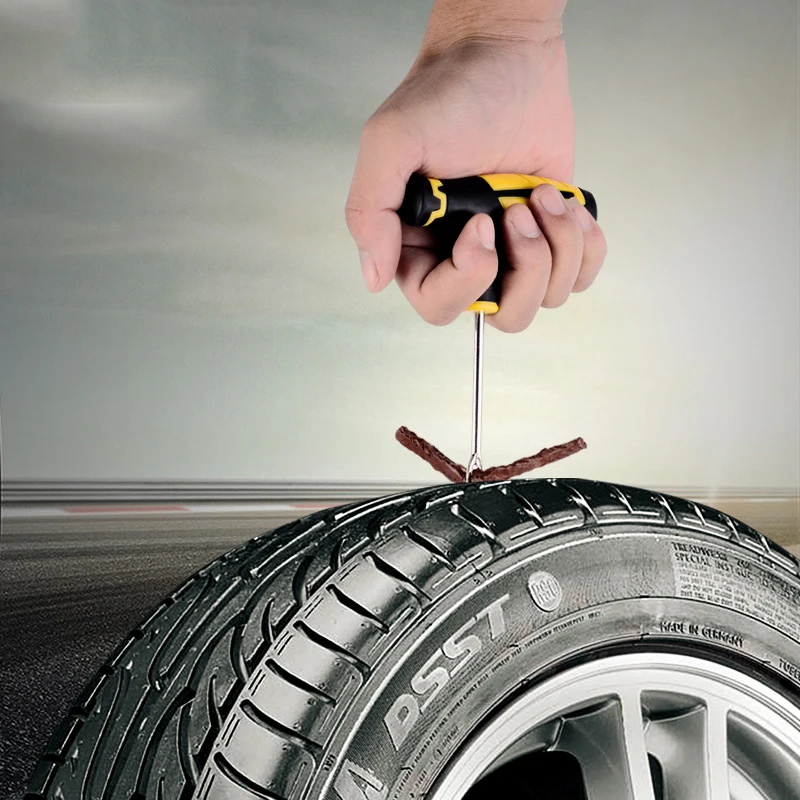 Masters can put cord patches even in the tread area. But only on condition that the distance from the sidewall to the swelling is more than 40 mm. If less, the tire is not subject to further operation. By the way, on low-profile tires, hernias, for the most part, are not repairable - both on the tread and on the sidewalls.
Masters can put cord patches even in the tread area. But only on condition that the distance from the sidewall to the swelling is more than 40 mm. If less, the tire is not subject to further operation. By the way, on low-profile tires, hernias, for the most part, are not repairable - both on the tread and on the sidewalls.
One of the major problems with tires comes from unprofessional repairs. Moreover, the owner most often does not know about it. We are talking about damage to the bead ring, as a result of which the tire does not initially hold the specified pressure.
Eventually the bead ring starts to push out from the rim. At high speed or under heavy load, such a wheel can be disassembled, which again threatens the car with a loss of control.
This damage can be repaired provided that the wire ring or base is not damaged. Special technologies for such repairs are not provided, but experienced craftsmen use the so-called "cold" or chemical vulcanization using a two-component sealant. The resulting mass covers places where there is no rubber on the bead ring. The main condition is to wait three days before mounting the tire on the disc.
The resulting mass covers places where there is no rubber on the bead ring. The main condition is to wait three days before mounting the tire on the disc.
As for Run Flat tires, according to the instructions of most manufacturers, they are not subject to repair. In extreme cases, you can use a bottle of special pressurized sealant that comes as a repair kit.
Comment of the expert of the company "SHINSERVICE":
Alexander Golubev
expert "SHINSERVICE"
First of all, we recall that most tire manufacturers do not recognize handicraft tire repair. It is considered a sign of external influence and changes in the design of the tire. Such a tire automatically voids the warranty. This does not happen if tire repairs are carried out in specialized, authorized tire brands services. Note that almost all major tire brands give their own extended warranty, according to which in most cases the repair is free, at a discount, or the product is generally replaced with a similar one, depending on the conditions of the program.
Based on our experience, we can note that in most cases damage in the bead area and in the shoulder area is not repairable.
I would also like to draw attention to the fact that most low-profile tires have high speed indexes (V and above), and even after professional repair they will not be able to be used in the previous modes without restrictions. Therefore, we strongly recommend changing the tire in all cases, except for tread punctures.
practice tires and wheels
Articles / Travel 3500 km from Moscow. Visiting Khanty and Mansi. We continue to follow our pilgrims, Alesei Zhirukhin and Sergei Lysenko. In this part of the report, they will tell us about Khanty-Mansiysk and Kogalym. 85 0 0 05. 12.2022
12.2022
Articles / Popular questions What is dangerous driving and is it possible to get a fine for it Just a couple of weeks ago, we figured out that traffic rules limit lane changes not only for dangerous driving. Today we will talk directly about the most dangerous driving. What mane... 111 0 one 05.12.2022
Articles / History A 45-year-long holiday: we see off the Ford Fiesta, remembering its brightest achievements Fiesta for Ford is almost the same iconic model as, for example, Golf for Volkswagen. After all, for more than 45 years, more than 16 million copies of seven generations have been produced. Alas,... 1267 four one 03.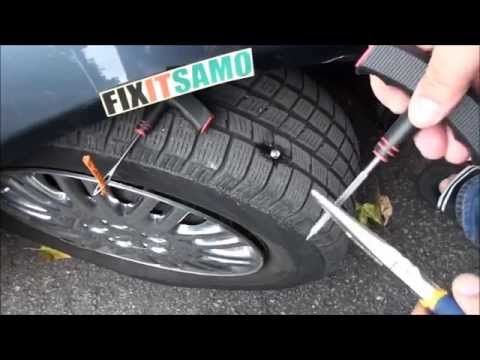 12.2022
12.2022
Test drives / Test drive Haval Dargo vs Mitsubishi Outlander: the dog is barking, the stranger is coming In the Haval dealership in the south of Moscow, life is in full swing: buyers look at cars, communicate with managers and sign some papers. While I was waiting for the test Dargo, the same cross... 18140 7 205 13.09.2022
Test drives / Test drive Motor from Mercedes, emblem from Renault, assembly from Dacia: test drive of the European Logan 1.0 It would seem that what's new can be told about the second generation Renault Logan, known to every Russian taxi driver, as they say, up and down? However, this car has.